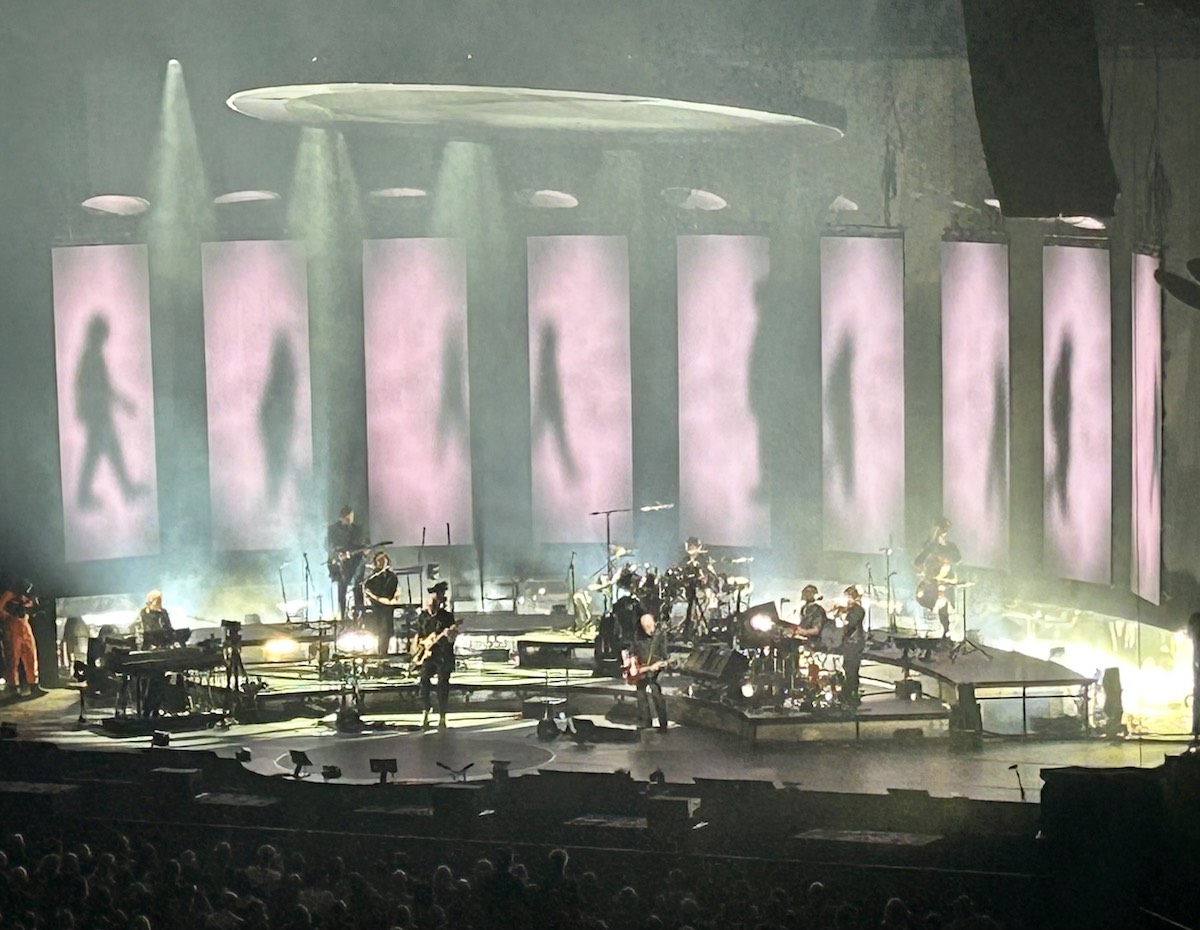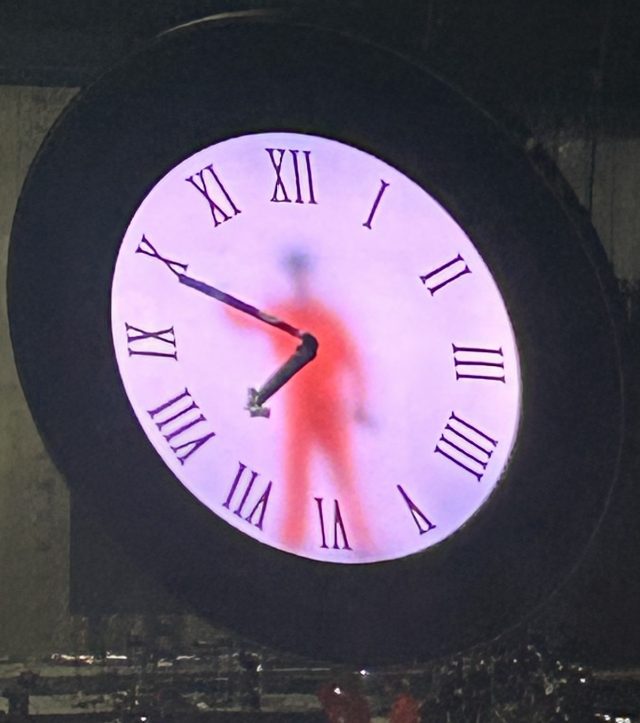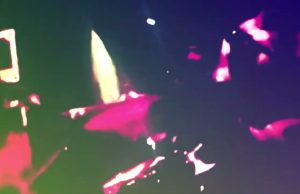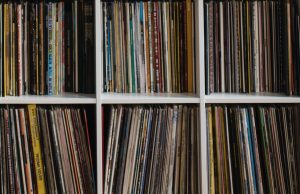 You can’t stop the passage of time. That theme was evident — intentionally and otherwise — at the second show of the North American leg of Peter Gabriel‘s i/o world tour Saturday night in Ottawa.
You can’t stop the passage of time. That theme was evident — intentionally and otherwise — at the second show of the North American leg of Peter Gabriel‘s i/o world tour Saturday night in Ottawa.
The 73-year-old Gabriel even made mention of it himself at the beginning of the three-hour event, in the form of a dad joke about bald heads and big bellies. He certainly didn’t fit that description the last time he was in the nation’s capital, in the summer of 1987 touring the biggest success of his career, the 1986 album So. The album had six hit singles, and also helped make a certain Gatineau man — producer Daniel Lanois — very rich as well. I was at that concert, 35 years ago. Gabriel was 38 and I was 15.
Before Saturday’s show, a round digital screen showed the image of a clock with Roman numerals. Behind the face of the clock, you could see an orange jumpsuit-clad roadcrew member, manually updating the arms of the clock with an ink roller, washcloth and squeegee. It was pretty clever and highly effective, cueing the gradual rise of stage synths after the arms were finally redrawn at 8 p.m., to the roar of the crowd.
Two things seemingly not adversely affected by the passage of time are Gabriel’s voice and the quality of his new material. He’s been gradually releasing songs from the new album, i/o since January, with a probable album release either late this year or early in 2024. He hasn’t put out a new studio album of original material since 2002’s Up. (There have been an orchestral re-recording compilation and a covers album since then, though.)
I’ve not really seen a show like this before. It was very intimate for an arena production, and all of that is down to Gabriel himself. When you see a big concert like this, the star you’re there to see is the star you get. You don’t get the person who does the interviews or has a personal life. You get their product-self.
With Gabriel, you get both. He walked out on stage alone, in a cap, speaking quietly and plainly. Like he was speaking to children. There was no opening act, and no pumping up of the crowd. It was kind of nice, of course. You feel like you’re seeing the real man introduce and explain the songs, and then the artist perform them. It’s a sort of a master class in professionalism, a peek behind the curtain, like theatre.
The music began with just Gabriel at the keyboard, joined by longtime collaborator, bassist Tony Levin. They performed a beautiful version of Washing Of The Water from the 1992 album Us — both seated around a mock fire in centre stage. Low volume. Low lights. No projection screens.
The rest of the eclectic band slowly joined Gabriel at centre stage, seated in a semi-circle around him for a performance of Growing Up from Up. The musicians were introduced for the first of several times. Gabriel also named the visual artists who created the films, artwork, effects and presentation of each new song. Perhaps the most impressive of these was the art direction for Road To Joy from i/o which was done with Chinese contemporary artist Ai Weiwei, which shows the influence Gabriel maintains amongst the world’s greatest artists.
There was a unique artist for each song and they were all stunning. Really incredible and innovative work — including a sort of transparent smart glass screen which was placed in front of the stage for the first two songs of the second half of the show. Gabriel was able to interact with it during performances of the new songs Darkness and Love Can Heal — the latter having just been released the previous week. The new songs really are quite extraordinary.
I particularly enjoyed Four Kinds Of Horses, and the Here Comes The Flood-like ballad Playing For Time. The latter is by no means a new song. Gabriel has had it in his repertoire for more than a decade. In fact, the first time he played it was in Quebec City in 2012, almost exactly 11 years ago.
Again, the passage of time theme. It was even heavier during a performance of And Still, another new song from i/o which Gabriel wrote for his mother Edith who passed away on New Year’s Eve 2016. There was no mention of Sinead O’Connor, who passed this summer in mid-July. She and Gabriel had been an item, briefly, and there is a statement about her on his website. The European leg of Gabriel’s tour wrapped on June 25, so this was his second show since her death.

The new songs are great, the stage show was immersive and beautiful, and the band was incredible — with special mention to cellist/vocalist Ayanna Witter-Johnson, who nearly stole the show singing Kate Bush’s parts in Don’t Give Up.
But the problem is, I left the show laughing — and not in a good way. Many of the older numbers were really done up arena-style and had an awkward, nostalgic over-the-topness which really clashed with the new material and made me — frankly — a little embarrassed. Songs like Sledgehammer at the end of the first set and a slew of others in the second set and two encores: In Your Eyes, Solsbury Hill and especially Biko were cringey. Even the finale (before the encores) of Live And Let Live from i/o had the feel of a Hillsong performance. One of those mega-church evangelical shows with an audience of middle-class people with their eyes closed and hands in the air. It’s the only time Gabriel seemed old — doing little dances and that.
Biko was super cringey, mostly because I’m certain the three-beer-drunk moms and dads around me with their fists in the air have no idea who Steven Biko was. The projection screen was filled with an image of the South African apartheid activist who died in 1977 following a massive brain hemorrhage. He was picked up at a roadblock by police and found naked, shackled outside a hospital more than 1,000 km away. He died of his injuries the following day.
It’s awful, but as the image of Biko on the screen slowly zoomed in on his eyes, the corresponding contrasting scene around me gave me the giggles. It was awkward and it shouldn’t have been.
This is why I hate arena shows, but I’m still really glad I went. Gabriel is still an outstanding performer, an incredible innovator and storyteller. His new songs are right there with the best he’s given us since he began smashing boundaries with the second Genesis record in the fall of 1970.
Stuff goes in, stuff goes out. i/o.
• • •
Area Resident is an Ottawa-based journalist, recording artist, music collector and re-seller. Hear (and buy) his music on Bandcamp, email him HERE, follow him on Instagram and check him out on Discogs.











































